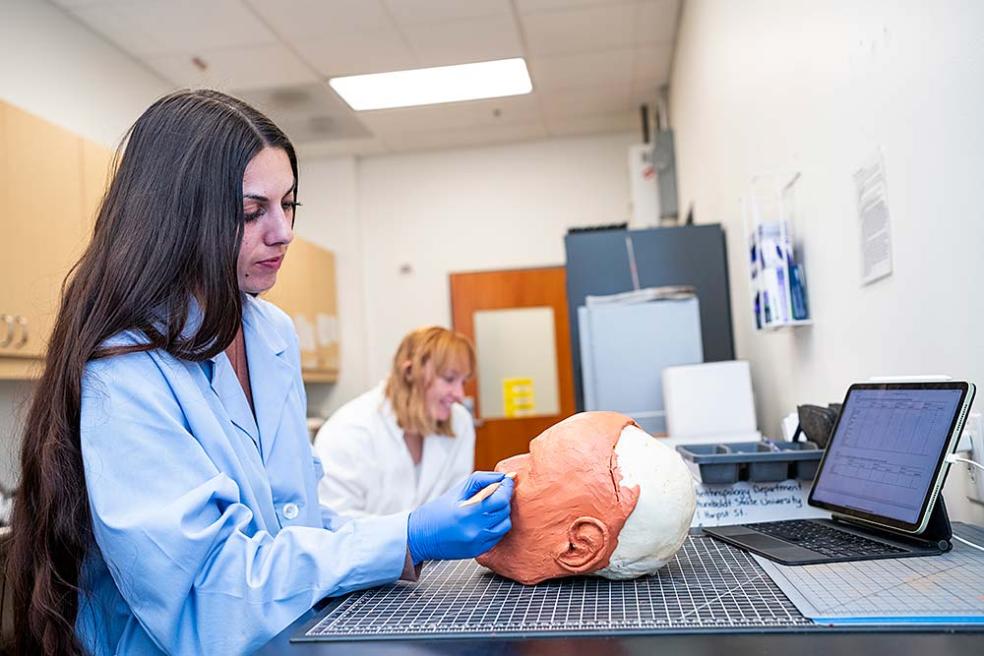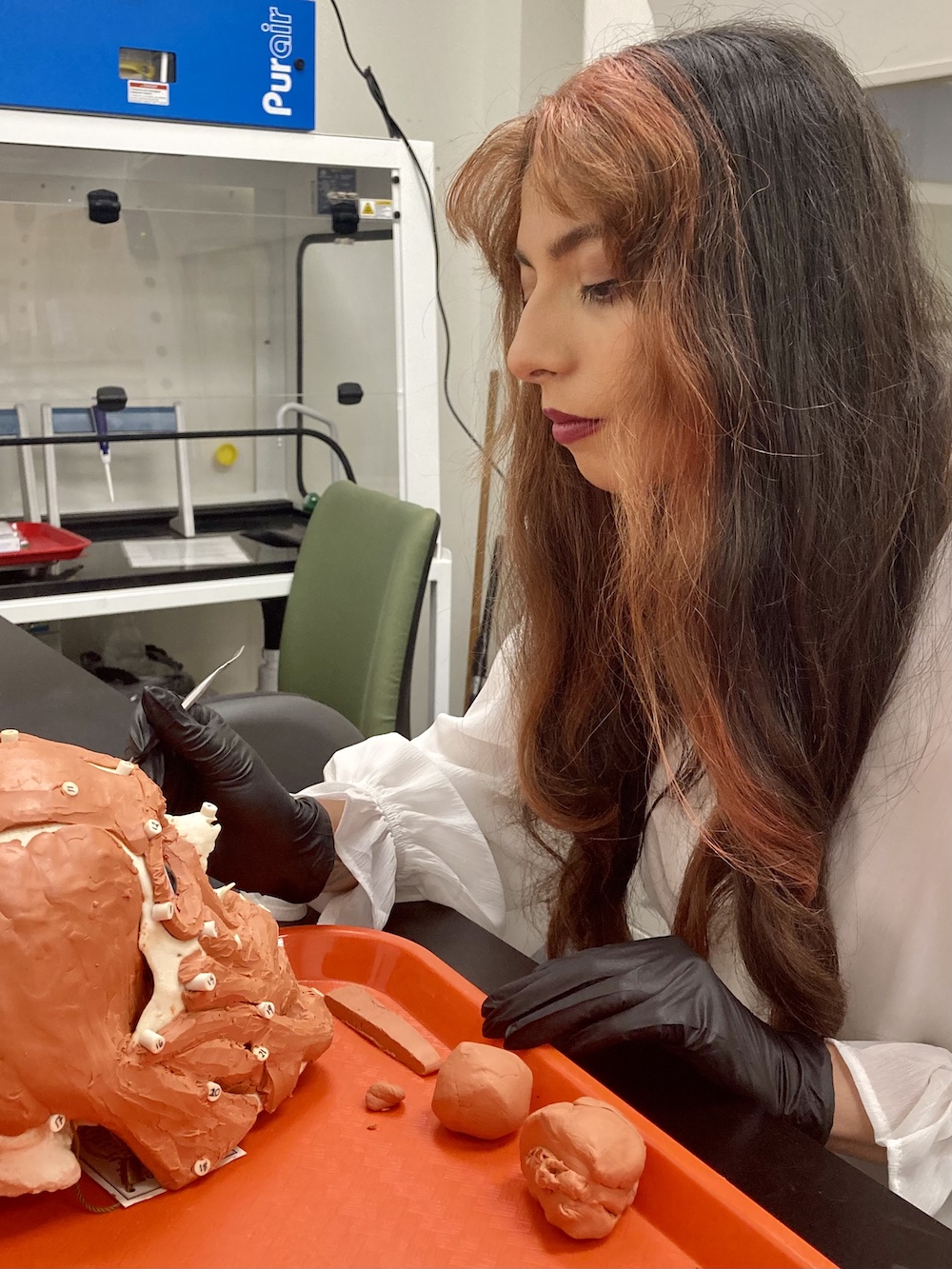
As part of the center’s 3D Facial Reconstruction Project, the students are practicing the science and art of forensic facial reconstruction. Also known as facial approximation, it can be used to recreate images of individuals ranging from Neanderthals to mummies to modern day unidentified remains.
Facial reconstruction is used to generate an image of an individual’s face based on features of their skull, explains Dara Adams, Anthropology instructor and director of the research center.
In forensic anthropology, this process can sometimes help identify missing persons or human remains when other methods fail, Adams says. It is also used in archaeology and paleoanthropology to give a clearer glimpse into faces of the distant past, including other hominids, early Homo sapiens, and even Egypt’s Tutankhamun aka King Tut.
The oldest specimen reconstructed by students in the lab is a cast of Australopithecus africanus, popularly known as the Taung child, a hominin from South Africa that dates to between approximately 3.3 to 2.1 million years ago, says Adams.
The 3D Facial Reconstruction Project teaches the forensic applications of facial reconstruction. This process requires extensive knowledge of facial anatomy, scientific methods, and artistic skill.
Students use two different techniques to complete reconstructions—3D clay and computerized modeling.
They work with replicas of human skulls, which are anatomically identical to their donors.
“The skulls we work with are casts from some very special people who chose to donate their body to science,” explains Carrie White, senior Biology major and intern in the lab.
She let the cast guide her as she completed her reconstruction. “Although I was working by myself in the laboratory, I had the sense that I wasn’t alone. I tried as much as I could to just place the clay and allow the face in front of me to tell me the story,” she adds.
Nearly a decade ago, White’s uncle went missing—that experience sparked her interest in missing persons cases. She began interning with the facial reconstruction project in September 2023 with the goal of reconstructing a human face.
“As someone who has experienced what it feels like to have a family member go missing, I hope that my skills gained from this project can allow me to work on unidentified missing persons cases in the future and potentially reunite someone who is lost with their family,” says White, who is also a volunteer for the Humboldt County Sheriff’s Department’s Coroner’s Office.
Before beginning a reconstruction, students conduct extensive research and estimate the age and sex of the individual whose skull they are assigned to reconstruct. Next, they place tissue depth markers on several specific points throughout the face. These markers vary depending on factors like age.
Then, they start placing the clay, covering the tissue markers as they go. After all markers are covered and the clay is placed, students can add additional facial features such as a nose and ears.

Once they have completed their reconstructions, interns can digitally refine them using FaceGen, a 3D facial modeling software. They can add hair, adjust eye color, and more.
Every skull, like every face, is different. So, students pay careful attention to the unique features of each, such as face shape and proportions. But some features, like lips or eyes, cannot be deduced from the skull and therefore require interpretation.
In addition to learning reconstruction methods, students are also gaining hands-on skills in independent research, lab safety protocols, and research ethics related to working with cast replicas of human bones.
Anthropology students initiated the 3D Facial Reconstruction Project in 2016. The group of six undergraduate Anthropology majors researched facial reconstruction techniques and applied them to casts of hominin fossil skulls, says Adams. The students showcased their reconstructions at ideaFest in 2017, and the project took off from there.
Since 2016, approximately 15 students have been involved in the project, and nearly a dozen have successfully completed reconstructions. The lab attracts students from liberal arts and STEM disciplines including Anthropology, Biological Science, Criminology & Justice Studies and more, providing skills that are useful for careers in medicine, law, education, and more.
For Cal Poly Humboldt alum Arleen Gomez, who completed the internship and bachelor’s degrees in Anthropology and Criminology & Justice Studies with a minor in Studio Art this fall, the experience allowed her to bring a voice back to the deceased.
Gomez’s background in art proved very useful, she says. “Taking sculpting classes and doing painting and even drawings helped with the complex facial anatomy.”
“I thought about the individual the entire time,” adds Gomez. “I treated the experience like I was working on an actual forensic case.”